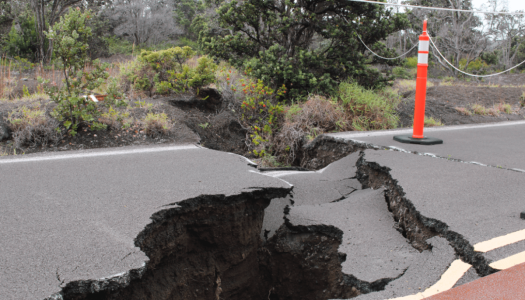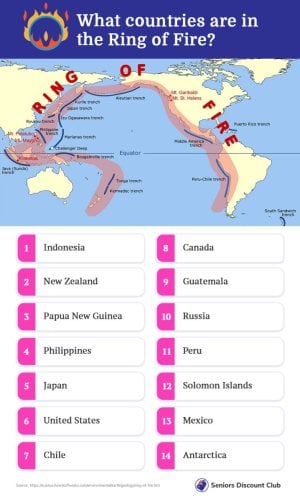What Australian cities are at the highest risk for devastating earthquakes? Expert reveals shocking details
- Replies 1
Despite the common perception that earthquakes are a far-off concern, one expert has revealed startling information that certain Australian cities are at a higher risk for earthquakes than previously thought.
Professor Phil Cummins, a senior seismologist at Geoscience Australia, cleared up some misconceptions during a recent interview and even detailed which Aussie cities find themselves at the epicentre of potential seismic hazards.
While indicating that 'earthquakes can occur anywhere in Australia', Professor Cummins mentioned that Adelaide, Canberra, and Darwin might be the capitals that are most at risk.
'Adelaide springs to mind', he said, citing the city's proximity to elevated seismic zones and active fault lines. Canberra and Darwin are also at the top of the list, the latter being affected by earthquakes in Indonesia which, though at a considerable distance, may still cause minor damage and alarm.

Melbourne was recently rattled by a 4.0-magnitude quake – its largest in over 120 years – and its second-largest ever recorded. However, this pales in comparison to the potential 7.5-magnitude earthquake that he believes could strike Australian soil in the future.
Such an earthquake occurrence would indeed be monumental, dwarfing anything we've experienced thus far. The geological record indicates that such earthquakes have happened in the distant past, and the Australian National Seismic Hazards Assessment map supports this possibility.
Professor Cummins also debunked the widely-held belief that earthquakes are exclusive to the 'Ring of Fire', a chain of seismically active regions along the Pacific Ocean rim.
While Australia is not on this arc, it is a stable continental plate, meaning our country's earthquakes develop due to forces exerted on plate boundaries – which include New Zealand, Papua New Guinea and even India.
If you're worried about the safety of our buildings and infrastructure in light of this information, you can rest assured that the Australian building code implemented changes in 1989 that require seismic resilience in construction and planning. However, older heritage buildings, especially those constructed before 1989, may not be as earthquake-resistant.
Unfortunately, predicting when and where earthquakes will strike remains a challenge for experts. Professor Cummins advises that when an earthquake does occur, it's crucial to 'duck, cover, and hold' rather than attempting to flee outside and risk injury from debris.

The bottom line? We must stay informed and be prepared to react if necessary. Additionally, if you live in an older building, know the safest place in your builder to take cover.
We hope you found this article both informative and helpful! Remember to stay safe while enjoying the beauty of our wonderful country, which we proudly call home. The spirit of our resilient Aussie community remains unshaken, undeterred by any earthquake!
We would love to hear your thoughts on this topic, so please feel free to share them with us in the comments section below!
Professor Phil Cummins, a senior seismologist at Geoscience Australia, cleared up some misconceptions during a recent interview and even detailed which Aussie cities find themselves at the epicentre of potential seismic hazards.
While indicating that 'earthquakes can occur anywhere in Australia', Professor Cummins mentioned that Adelaide, Canberra, and Darwin might be the capitals that are most at risk.
'Adelaide springs to mind', he said, citing the city's proximity to elevated seismic zones and active fault lines. Canberra and Darwin are also at the top of the list, the latter being affected by earthquakes in Indonesia which, though at a considerable distance, may still cause minor damage and alarm.

According to a senior seismologist from Geoscience Australia, earthquakes can occur anywhere in Australia, although they are rare occurrences. Credit: Pexels/Wilson Malone.
Melbourne was recently rattled by a 4.0-magnitude quake – its largest in over 120 years – and its second-largest ever recorded. However, this pales in comparison to the potential 7.5-magnitude earthquake that he believes could strike Australian soil in the future.
Such an earthquake occurrence would indeed be monumental, dwarfing anything we've experienced thus far. The geological record indicates that such earthquakes have happened in the distant past, and the Australian National Seismic Hazards Assessment map supports this possibility.
Professor Cummins also debunked the widely-held belief that earthquakes are exclusive to the 'Ring of Fire', a chain of seismically active regions along the Pacific Ocean rim.
While Australia is not on this arc, it is a stable continental plate, meaning our country's earthquakes develop due to forces exerted on plate boundaries – which include New Zealand, Papua New Guinea and even India.
If you're worried about the safety of our buildings and infrastructure in light of this information, you can rest assured that the Australian building code implemented changes in 1989 that require seismic resilience in construction and planning. However, older heritage buildings, especially those constructed before 1989, may not be as earthquake-resistant.
Unfortunately, predicting when and where earthquakes will strike remains a challenge for experts. Professor Cummins advises that when an earthquake does occur, it's crucial to 'duck, cover, and hold' rather than attempting to flee outside and risk injury from debris.
Key Takeaways
- Senior seismologist at Geoscience Australia, Professor Phil Cummins, warns that Australia can be at risk of large earthquakes.
- Cummins lists Adelaide, Canberra, and Darwin as cities most at risk, with Darwin experiencing the most shaking due to earthquakes in Indonesia.
- The Australian National Seismic Hazards Assessment map indicates that 7.5-magnitude earthquakes are possible in Australia.
- Cummins explains that Australian earthquakes develop due to forces exerted on plate boundaries in New Zealand, Papua New Guinea, and India, which result in stressors transmitted through the plate's interior.
The bottom line? We must stay informed and be prepared to react if necessary. Additionally, if you live in an older building, know the safest place in your builder to take cover.
We hope you found this article both informative and helpful! Remember to stay safe while enjoying the beauty of our wonderful country, which we proudly call home. The spirit of our resilient Aussie community remains unshaken, undeterred by any earthquake!
We would love to hear your thoughts on this topic, so please feel free to share them with us in the comments section below!








